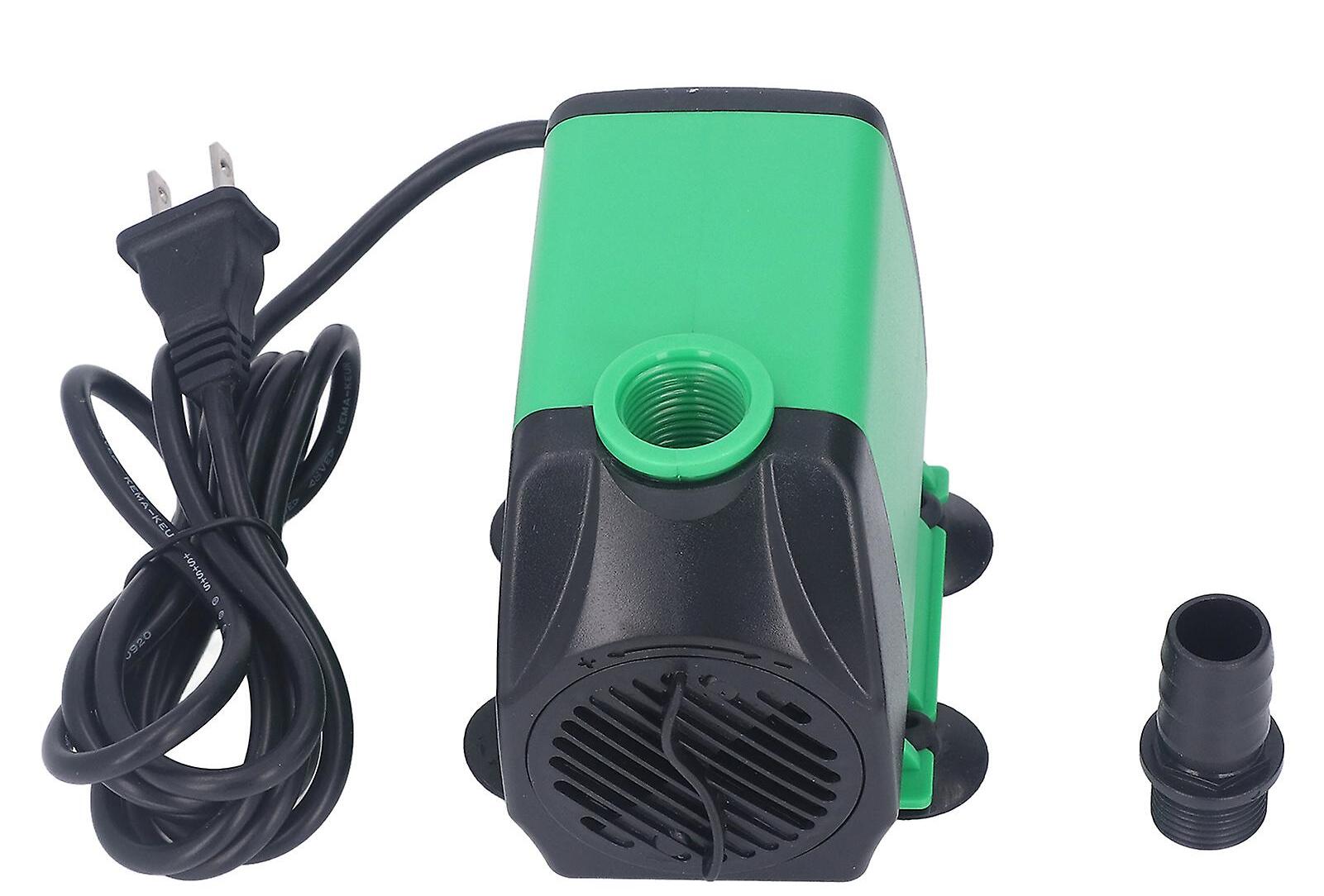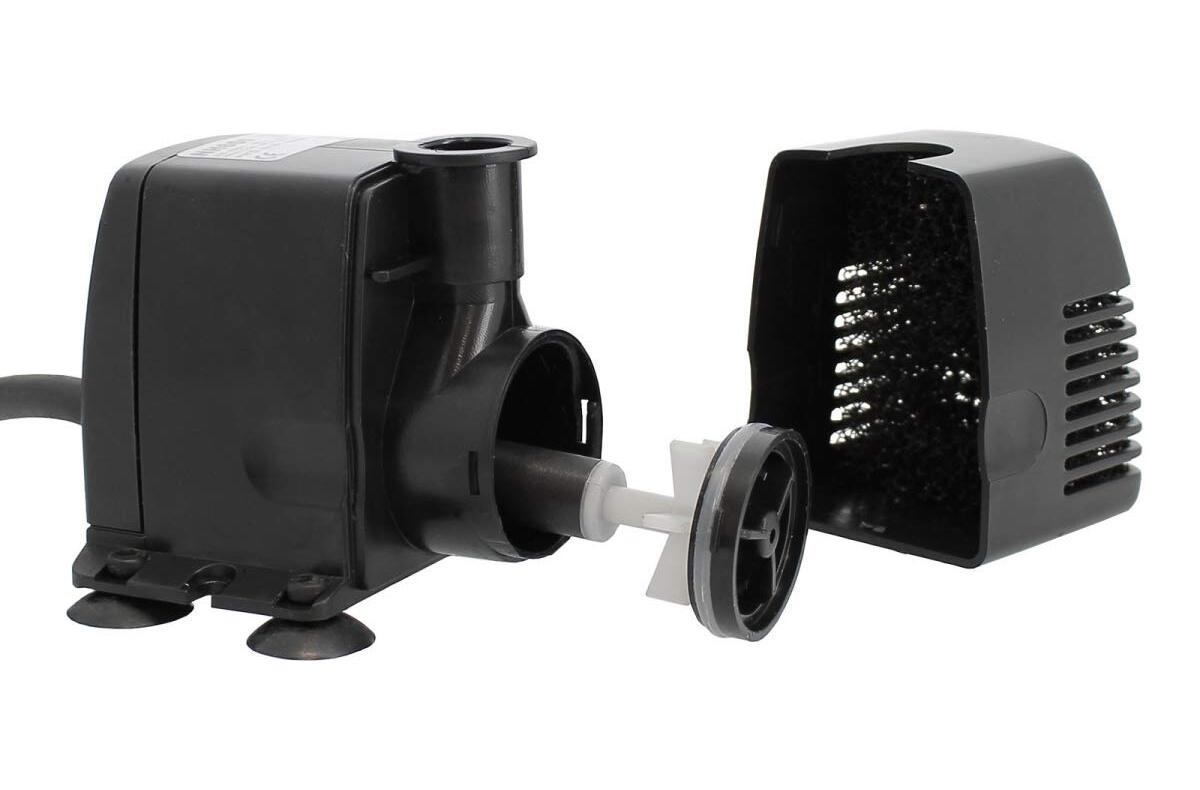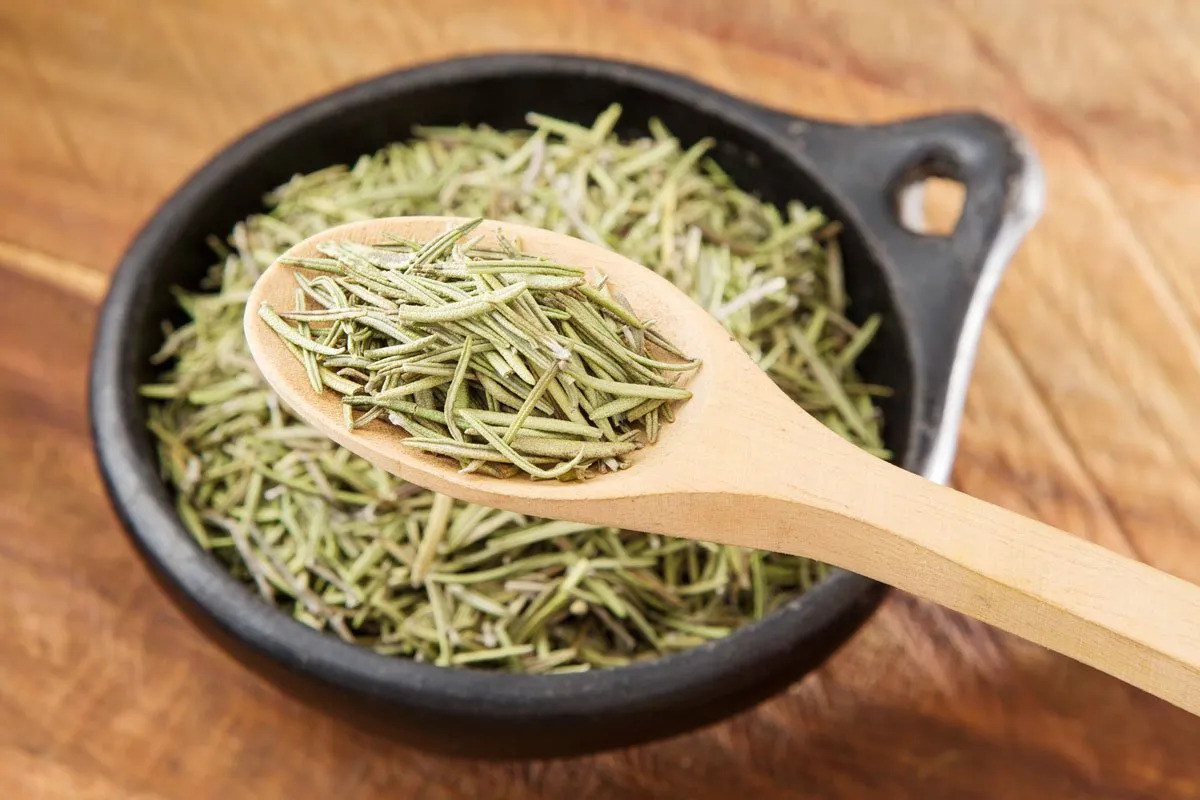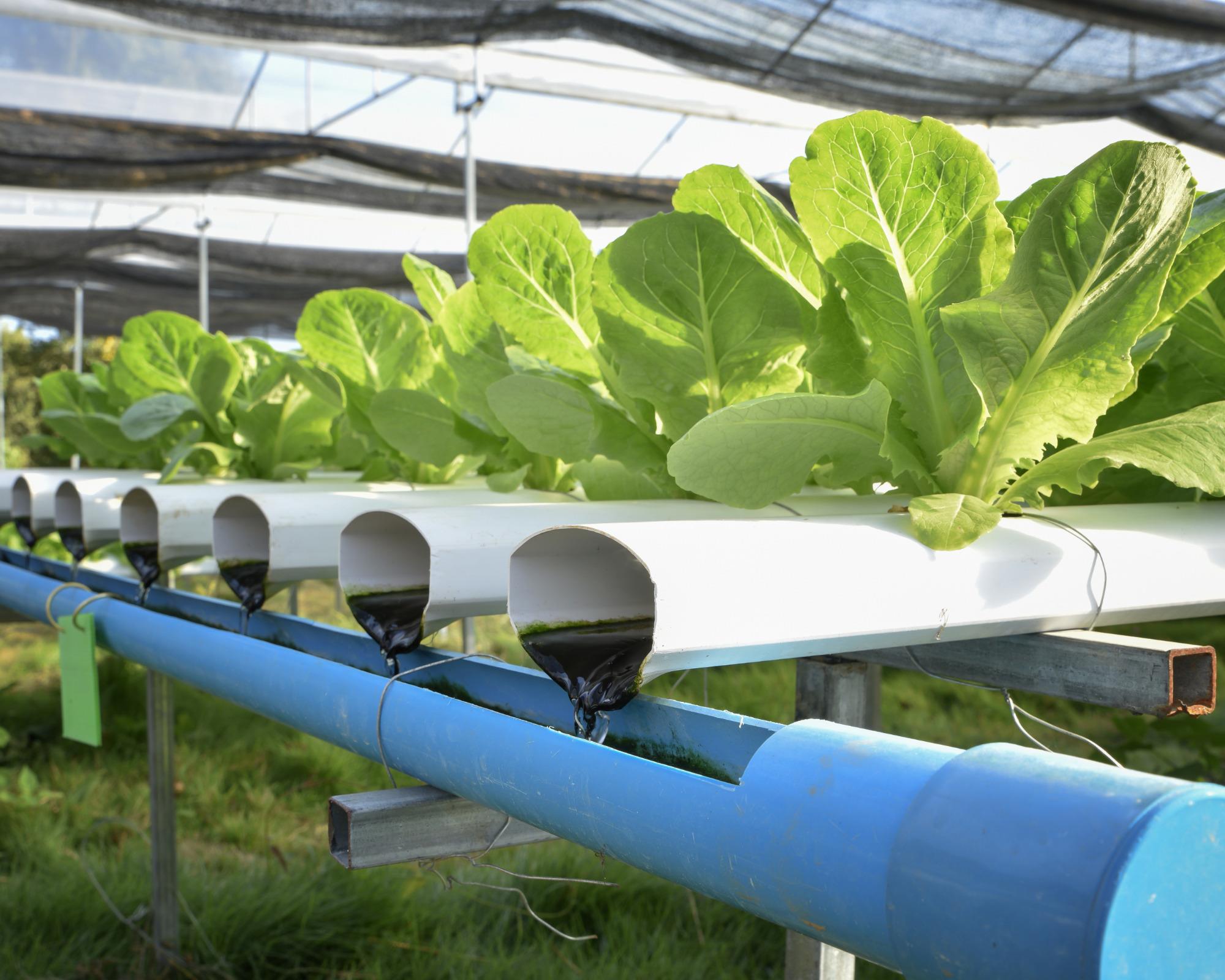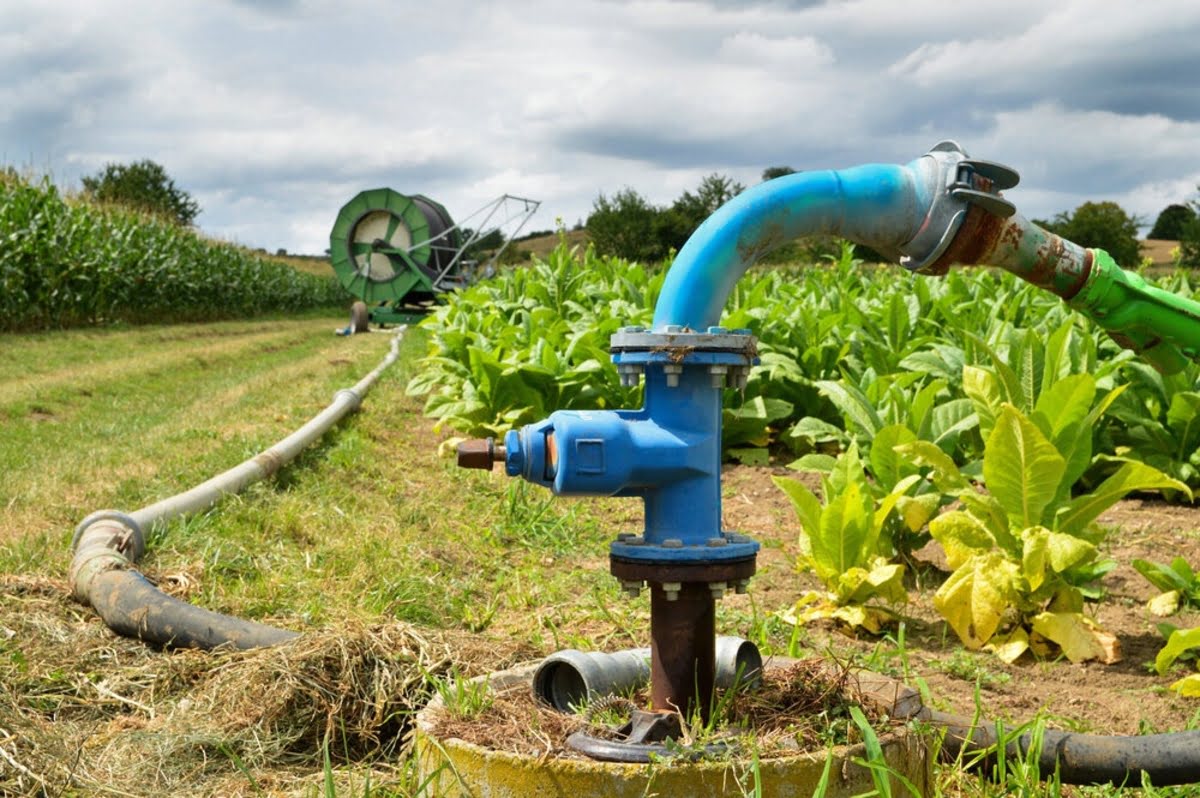Home>Gardening Tips and Tricks>Eco-Friendly Gardening>How Much Air Pump For Hydroponics


Eco-Friendly Gardening
How Much Air Pump For Hydroponics
Published: September 24, 2023
Shop for eco-friendly air pumps for hydroponics and create a sustainable gardening system with our wide selection of high-quality pumps. Achieve optimal air circulation for your plants while minimizing environmental impact.
(Many of the links in this article redirect to a specific reviewed product. Your purchase of these products through affiliate links helps to generate commission for Chicagolandgardening.com, at no extra cost. Learn more)
Table of Contents
Introduction
Welcome to the world of hydroponics, a method of growing plants without soil. Hydroponic gardening has gained popularity in recent years due to its numerous benefits such as water conservation, year-round cultivation, and higher crop yields. One important component of a successful hydroponics system is an air pump.
An air pump plays a crucial role in creating an oxygen-rich environment for plant roots, stimulating healthy growth and nutrient absorption. It helps to maintain proper water oxygenation, preventing stagnation and nutrient deficiencies. In this article, we will explore the purpose of an air pump in hydroponics and provide guidelines on choosing the right one for your system.
Whether you are a beginner or experienced hydroponic gardener, understanding how an air pump works and its importance will help you optimize the efficiency and productivity of your garden. So, let’s dive into the world of air pumps and learn how they can contribute to your eco-friendly gardening journey.
Purpose of an Air Pump in Hydroponics
An air pump in hydroponics serves several important purposes that are crucial to the overall health and success of your plants. Let’s take a closer look at these purposes:
- Oxygenation of the Nutrient Solution: In traditional soil gardening, plant roots receive oxygen naturally through the air pockets in the soil. However, in hydroponics, where plants are grown in a soilless medium, it is essential to provide an alternative source of oxygen. An air pump, when paired with an air stone or diffuser, releases tiny bubbles of air into the nutrient solution. As these bubbles rise through the solution, they bring much-needed oxygen to the roots, promoting their growth and preventing suffocation.
- Prevention of Stagnant Water: An air pump helps in preventing water stagnation in your hydroponic system. Stagnant water can lead to the growth of harmful bacteria, such as, pythium and fusarium, which can cause root rot and other diseases. By keeping the water constantly moving and oxygenated, the air pump helps to inhibit the growth of these pathogens, ensuring the health and vitality of your plants.
- Distribution of Nutrients: Proper nutrient distribution is vital for the optimal growth and development of your plants. When an air pump is used in conjunction with a nutrient solution, it ensures that the nutrients are evenly distributed throughout the system. This prevents nutrient imbalances and allows plants to absorb the necessary elements for consistent and healthy growth.
- Enhancement of Root System: The constant flow of oxygenated water provided by the air pump also has a positive impact on the development of the root system. It encourages the growth of a robust and healthy root network, which in turn leads to stronger plants and improved nutrient uptake. Additionally, well-oxygenated roots are less prone to diseases and can withstand stressful environmental conditions, such as high temperatures or drought.
Overall, an air pump is an essential component in hydroponic gardening as it ensures the proper oxygenation of the nutrient solution, prevents water stagnation, aids in nutrient distribution, and promotes healthy root development. By understanding the purpose of an air pump, you can appreciate its significance in maintaining a thriving and eco-friendly hydroponic garden.
Factors to Consider When Choosing an Air Pump
When selecting an air pump for your hydroponic system, there are several important factors to consider to ensure you make the right choice. These factors include:
- Airflow Rate: The airflow rate, measured in liters per minute (LPM) or gallons per hour (GPH), determines how much air the pump can deliver to the water. It’s crucial to choose an air pump with a sufficient airflow rate to adequately oxygenate your system. The ideal airflow rate depends on the size of your hydroponic system and the number of plants you are growing.
- Noise Level: The noise level of the air pump is an important consideration, especially if your hydroponic setup is indoors or located in a noise-sensitive area. Some air pumps can be quite loud, which can be disruptive and bothersome. Look for air pumps that are specifically designed to operate quietly, ensuring a peaceful gardening environment.
- Energy Efficiency: Air pumps can consume a significant amount of electricity, so it’s wise to choose an energy-efficient model. Look for air pumps with features such as low wattage or adjustable output settings. This not only helps reduce your energy costs but also minimizes the environmental impact of your hydroponic system.
- Durability and Quality: Investing in a high-quality air pump is essential for long-term use. Look for pumps made from durable materials that can withstand the moisture-rich environment of a hydroponic system. It’s also a good idea to check customer reviews and look for reputable brands known for their reliability and longevity.
- Number of Outlets: Consider the number of outlets or ports the air pump has. This determines the number of air stones or diffusers you can connect to the pump. Having multiple outlets allows for better distribution of air and ensures that all areas of the system receive sufficient oxygenation.
- Price: Consider your budget when choosing an air pump for your hydroponic system. While it’s important to invest in a quality pump, it’s also essential to find one that fits within your financial constraints. Take your time to research and compare prices to find the best value for your money.
By carefully considering these factors, you can select an air pump that meets the specific needs of your hydroponic system. Remember, choosing the right air pump is crucial for maintaining a healthy and thriving garden, so take the time to make an informed decision.
Calculating the Air Pump Size for Hydroponics Systems
Calculating the appropriate size of an air pump for your hydroponic system is essential to ensure adequate oxygenation for your plants. Here are the steps to follow:
- Determine the Water Volume: Start by calculating the volume of water in your hydroponic system. Measure the length, width, and depth of your nutrient reservoir or grow beds and multiply these dimensions to find the total water volume. For example, if you have a reservoir that measures 2 feet long, 1.5 feet wide, and 1 foot deep, the total water volume would be 2 x 1.5 x 1 = 3 cubic feet.
- Calculate the Required Airflow: The recommended airflow rate for hydroponic systems is typically around 0.5 to 1 cubic foot per minute (CFM) of air per gallon of water. Multiply the total water volume by the desired airflow rate to calculate the required airflow. For example, if you have a system with a water volume of 3 cubic feet and you want an airflow rate of 1 CFM per gallon, and since there are typically 7.48 gallons in a cubic foot, the required airflow would be 3 x 7.48 x 1 = 22.44 CFM.
- Select an Air Pump: Once you have calculated the required airflow, you can choose an air pump that provides the necessary airflow rate. Keep in mind that it’s better to choose a slightly larger air pump than needed, as it allows for any potential system expansions in the future.
- Consider System Complexity: If you have a more intricate hydroponic system with multiple grow beds or channels, you may need to factor in the additional water volume when calculating the required airflow. Ensure that the air pump you choose can provide sufficient airflow to oxygenate the entire system adequately.
By following these steps and calculating the air pump size based on your specific hydroponic system requirements, you can ensure that your plants receive the necessary oxygen for optimal growth and development. Remember to periodically assess the air pump’s performance and adjust as needed to maintain a healthy and thriving hydroponic garden.
Benefits of Using an Appropriate Air Pump
Using an appropriate air pump in your hydroponic system offers numerous benefits that contribute to the overall success and productivity of your garden. Let’s explore some key advantages:
- Enhanced Oxygenation: An appropriate air pump ensures a consistent and sufficient supply of oxygen to the roots of your plants. This promotes healthy root development and nutrient uptake, leading to faster growth and higher yields. Proper oxygenation also helps to prevent anaerobic conditions, which can lead to root rot and other plant health issues.
- Reduced Risk of Water Stagnation: By keeping the nutrient solution well-circulated with the help of an air pump, you can minimize the risk of water stagnation. Stagnant water can lead to the growth of harmful bacteria and algae, which can have detrimental effects on plant health. With proper circulation, you can prevent these issues and maintain a clean and hygienic hydroponic system.
- Improved Nutrient Delivery: An appropriate air pump aids in the distribution of nutrients throughout your hydroponic system. It helps to prevent nutrient stratification, where certain areas of the system receive more nutrients than others. By ensuring even distribution, your plants will have consistent access to the essential elements they need for robust growth and optimal yields.
- Promotion of Beneficial Microorganisms: The increased oxygenation provided by an air pump promotes the growth of beneficial microorganisms in your hydroponic system. These microbes help to break down organic matter, release nutrients, and suppress the growth of harmful pathogens. They contribute to the overall health and balance of your garden, creating a thriving ecosystem for your plants.
- Reduction of Maintenance: An appropriate air pump can help reduce the maintenance requirements of your hydroponic system. By keeping the water well-oxygenated and preventing issues like nutrient stratification and water stagnation, you can minimize the need for frequent water changes and system cleanings. This saves you time and effort, allowing you to focus on other aspects of your gardening.
By using an appropriate air pump in your hydroponic system, you can enjoy these benefits and create an optimal environment for your plants to thrive. Remember to select a pump that meets the specific requirements of your system and regularly monitor its performance to ensure proper oxygenation and circulation of the nutrient solution. Your plants will thank you with healthy growth and abundant harvests.
Common Mistakes to Avoid When Selecting an Air Pump
Choosing the right air pump for your hydroponic system is crucial for its overall efficiency and success. To help you make an informed decision, here are some common mistakes to avoid when selecting an air pump:
- Ignoring Airflow Requirements: One of the most common mistakes is overlooking the required airflow rate for your hydroponic system. Ensure that you calculate the appropriate airflow based on the size of your system and the number of plants you are growing. Underestimating the required airflow can result in insufficient oxygenation, leading to poor plant growth and potential health issues.
- Overlooking Noise Levels: Noise can be a significant factor, especially if you plan to place your hydroponic system indoors or in a noise-sensitive area. Avoid the mistake of choosing an air pump without considering its noise level. Look for models specifically designed to operate quietly or consider investing in noise dampening accessories, such as soundproofing enclosures or vibration pads.
- Not Considering Energy Efficiency: Energy consumption is another important factor to consider when selecting an air pump. Overlooking energy efficiency can lead to higher operating costs and unnecessary strain on the environment. Look for air pumps with low wattage or adjustable output settings to minimize energy consumption while maintaining adequate oxygenation.
- Opting for Cheap and Low-Quality Options: While budget is a valid consideration, choosing a cheap and low-quality air pump may end up costing you more in the long run. These pumps often have shorter lifespans, are prone to malfunctions, and may not provide adequate airflow. Invest in a high-quality air pump from a reputable brand to ensure durability and reliable performance.
- Underestimating the Importance of Durability: Hydroponic systems require constant exposure to moisture, which can be detrimental to certain materials. Avoid the mistake of selecting an air pump that is not designed to withstand the moist environment of a hydroponic system. Look for pumps made of corrosion-resistant materials to ensure long-lasting performance.
- Not Factoring in System Expansion: It’s essential to consider the potential for system expansion when selecting an air pump. If you plan to expand your hydroponic setup in the future, choose a pump that can accommodate additional outlets or has adjustable airflow settings. This will save you the hassle of replacing the pump when expanding your garden.
By avoiding these common mistakes, you can select the right air pump for your hydroponic system, ensuring adequate oxygenation, energy efficiency, and long-term reliability. Take your time to research and compare different options to make an informed decision that aligns with the specific needs of your hydroponic garden.
Conclusion
Choosing the right air pump for your hydroponic system plays a vital role in creating an optimal growing environment for your plants. By considering factors such as airflow rate, noise level, energy efficiency, durability, and system size, you can select an air pump that meets the specific requirements of your garden.
An appropriate air pump ensures proper oxygenation of the nutrient solution, prevents water stagnation, aids in nutrient distribution, and promotes healthy root development. These benefits contribute to the overall success and productivity of your hydroponic system.
However, when selecting an air pump, it’s crucial to avoid common mistakes such as ignoring airflow requirements, overlooking noise levels, not considering energy efficiency, opting for cheap and low-quality options, underestimating durability, and failing to factor in system expansion. By avoiding these pitfalls, you can make a well-informed decision and choose an air pump that will enhance your overall hydroponic experience.
Remember to periodically assess the performance of your air pump and make necessary adjustments to maintain a healthy and thriving hydroponic garden. With the right air pump in place, you can enjoy the benefits of increased oxygenation, reduced risk of water stagnation, improved nutrient delivery, promotion of beneficial microorganisms, and reduced maintenance.
So, take the time to research and choose wisely. Your plants will thank you by flourishing in their soilless environment, providing you with bountiful harvests and a beautiful, eco-friendly garden.
